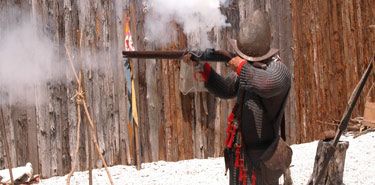Always, the first question responsible legislators should ask when writing a law is this: What significant problem is being solved by putting another code on the books?
This is the nut of a conundrum now before the U.S. National Park Service as it prepares to deal with a new gun law buried as a rider (amendment) in a hastily-passed credit card reform bill on Capitol Hill.
It caught many by surprise. Public Law 111-24 will allow tourists, beginning in 2010 if not sooner, to openly tote the legal gun of their choice through national parks such as Yellowstone, Grand Teton and other bustling crown jewel preserves.
In contrast to how the legislation was originally proposed,it is not a provision that only empowers licensed individuals with concealed weapons permits.
In some states, it allows any citizen, of legal age, to holster a loaded sidearm or walk with a rifle or shotgun slung over their backs through campgrounds, along hiking trails and while standing off roadways at popular scenic overlooks.
Tourists will even be able to use their riflescopes, while still on the barrel, as optical devices for viewing wildlife. As one seasoned professional with a state game agency told me: "It really opens up some mind-bending dilemmas, doesn't it?"
Park officials nationwide say they are committed to enforcing all laws handed down by Congress and the president.

But privately, rangers are deeply concerned about how the potential, expanded presence of firearms in crowded parks will affect human behavior in places where guns, for the most part, have not existed before, and where public and wildlife safety have not heretofore been problems in need of fixing.
Environmental groups such as the National Parks Conservation Association, the Natural Resources Defense Council, and the Greater Yellowstone Coalition have all warned of dire consequences. They are not anti-gun; they just believe the tradition of not having armed national park tourists, which has worked well for nearly a century, should be upheld.
Although the law was packaged in the flowery rhetoric of "expanding liberty" and protecting Second Amendment rights when first drafted during the Bush Administration, it is, when one looks deeper, little more than a calculated wedge issue that only inflames our fear of each other.
Authored by U.S. Sen. Tom Coburn (R-Oklahoma) and endorsed by the National Rifle Association,it is a thinly veiled attempt to create a false "pro-gun versus anti-gun"litmus test aimed at further polarizing the country.
I too own guns, and support and defend the right to bear arms that is a boilerplate component of the U.S. Constitution. I even firmly agree with the NRA on certain issues. But I have never, after hiking thousands of miles and visiting dozens of national parks, ever felt the need to carry a loaded firearm inside one.
Proponents say it will "protect Americans against violent crime", the kind that exists in urban parks and remote preserves along the U.S.border with Mexico. That may be.
But tell us, Senator Coburn, how many homicides, drug killings, and acts of gang violence have occurred in Yellowstone and Grand Teton in the last decade?
Name one.
Fact: Nearly all of the violent offenses ever involving people and guns in these parks were carried out by poachers killing animals and not as acts of self-defense. One wonders: Has Coburn not been to Yellowstone?
Another thing he won't find in the Yellowstone and Grand Teton statistics are deaths or serious injuries caused by accidental gun discharges during the busy summer months. This law will actually increase the likelihood of that happening.
One can also imagine these scenarios: A family approaches a bison. A lone bull, say 40 yards away, raises his head and apart from roiling of tail, shows no indication of an imminent charge.
Is papa with a gun cleared of wrongdoing when he tells investigating rangers he shot and killed the bison because he was afraid the animal was about to trample a family member?
Or what about the autumn chaos that ensues when tourists and photographers swarm around bugling elk? In recent years, a few bulls have charged people who got too close. Will it now be acceptable to provoke an animal and then gun it down?
Or picture rangers pulling up alongside suspicious looking individuals standing near a steamy elk or bison or wolf carcass, fitting the profile of poachers, only to claim their lives were endangered?
Even more importantly, how will the presence of guns compromise the welcoming ambiance that three million visitors seek during their visits to Yellowstone and Grand Teton?
How will parents feel about paranoid individuals sitting around adjacent campfires with guns, leaning them up against their RVs or bringing weapons with them to outdoor ranger interpretive programs?
Apparently, handguns, rifles and shotguns will not be allowed in visitor centers, but there is a question about whether the prohibition applies to park hotels and restaurants where alcohol is served.
Public Law 111-24 does not enhance public appreciation for the Second Amendment; it is a liability to it.
If, and when it results in just one headline grabbing human tragedy or leads to an increase in wildlife poaching, will politicians who voted for it hold themselves accountable?
Todd Wilkinson has written about the environment for 25 years. This essay appeared at Wildlife Art Journal.
DeSoto National Memorial, photo courtesy of National Park Service.